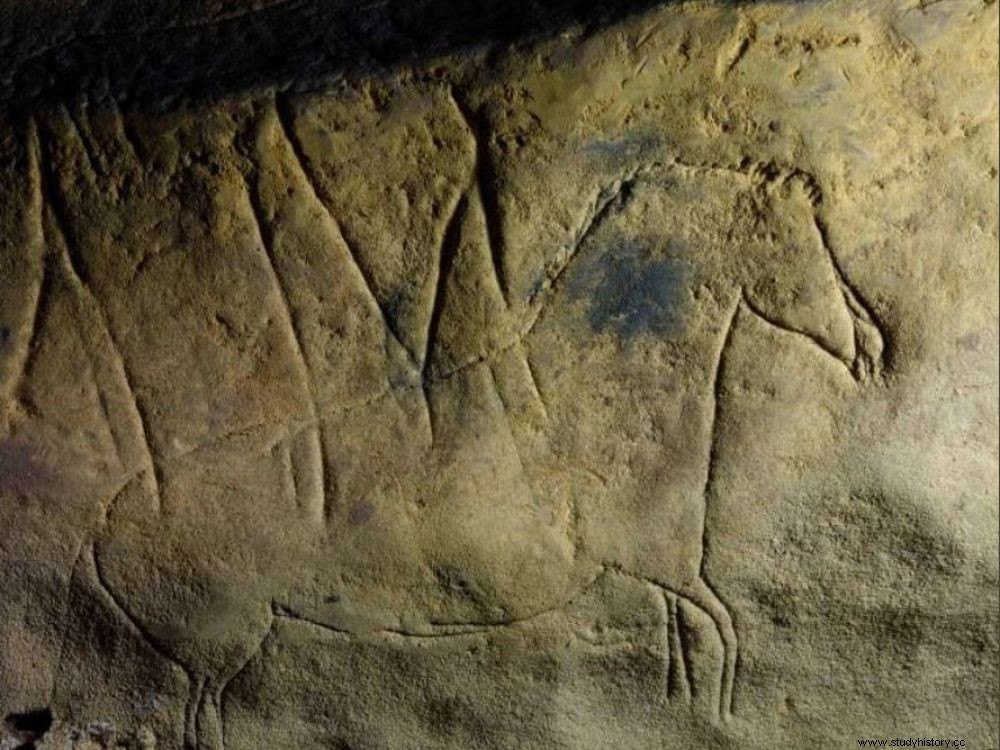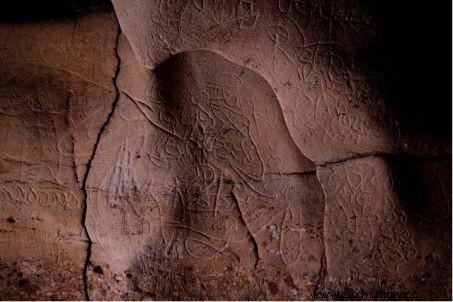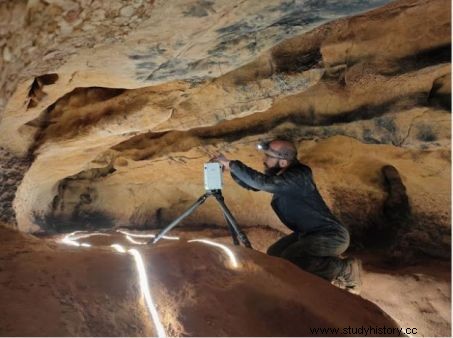A Palaeolithic "sanctuary" comprising more than a hundred parietal works dated to around 15,000 years old has been discovered in a cave in L'Espluga de Francoli, in the province of Tarragona, in Catalonia.

Horse engraved in the Font Major cave, in L'Espluga de Francoli (Catalonia).
Like a final tribute... Barely days after the death of Simon Cuencas, the last discoverer of the Lascaux cave (Dordogne) in 1940, nicknamed the "Sistine Chapel of Prehistory", chance wanted that the discovery of an unsuspected decorated cavity at L'Espluga de Francoli, in the province of Tarragona, in Catalonia (Spain). A "Catalan Altamira", as Barcelona's La Vanguardia dubbed it .
A hundred figures of horses, deer, bovids as well as abstract symbols
On the walls of the Font Major cave – whose network of galleries has been known since 1853 and considered among the longest in the world – a hundred figures of horses, deer, bovids as well as abstract symbols have been found, delicately incised in a fragile layer of silt.

Among the hundred parietal works from the caves of L'Espluga de Francoli, geometric engravings. ©Josep Maria Verges / IPHES
Remained in darkness for 15,000 years, they reappeared by the light of the flashlights of a team of prehistorians on October 30, 2019, the discovery having only been officially announced on February 7, 2020:"A L' Espluga de Francoli, a team from the Catalan Institute of Human Paleoecology and Social Evolution (IPHES) which was carrying out an archaeological excavation campaign under the direction of Josep Maria Vergès, from the research center of the Rovira i Virigili University, l 'URV in Barcelona, decided to explore unknown areas of the cave, and it was on this occasion that this sanctuary was revealed ", thus explained Mariangela Vilallonga-Vives, Minister of Culture of Catalonia, during a public conference.

3D surveys of prehistoric engravings from the Font Major cave, in Catalonia. © IPHES
A parietal art exercised in the heart of an underground world
By keeping the discovery secret for several weeks, the specialists gave themselves the time to work in complete serenity to carry out 3D surveys of the prehistoric incisions and engravings. This is to better study these graphic works produced at the beginning of the Magdalenian, when the climate of southwestern Europe was much drier and colder than today. A time of great cultural expansion. For the populations of hunters who then lived in these regions, the caves were privileged locations to produce these graphic works, the deep meaning of which still eludes us. Specialists agree, however, that they must have had essential functions in symbolic expression. A parietal art exercised in the heart of an underground and secret world.
